6 Ways to Create Desktop Shortcuts on Windows 11

For easier access to files, folders, apps, and websites, you can create shortcuts for your desktop on Windows 11. Learn how in this guide.
If you want easy access to your apps, websites, and other utilities on Windows 11, you can create desktop shortcuts for them. While you can easily find apps from the Start menu, you may prefer to access your favorite shortcuts from the desktop.
If that’s the case, there are six different ways you can create desktop shortcuts on Windows 11. That includes apps, websites, folders, and more. Here are the steps to take to create shortcuts to specific items from the desktop to save yourself time and clicks.
1. Use the Windows Shortcut Wizard
One standard method to create a shortcut to a specific location or app is to use the built-in Shortcut Wizard.
To use the Shortcut Wizard on Windows 11
- Right-click an empty area on the desktop and select New > Shortcut from the context menu.

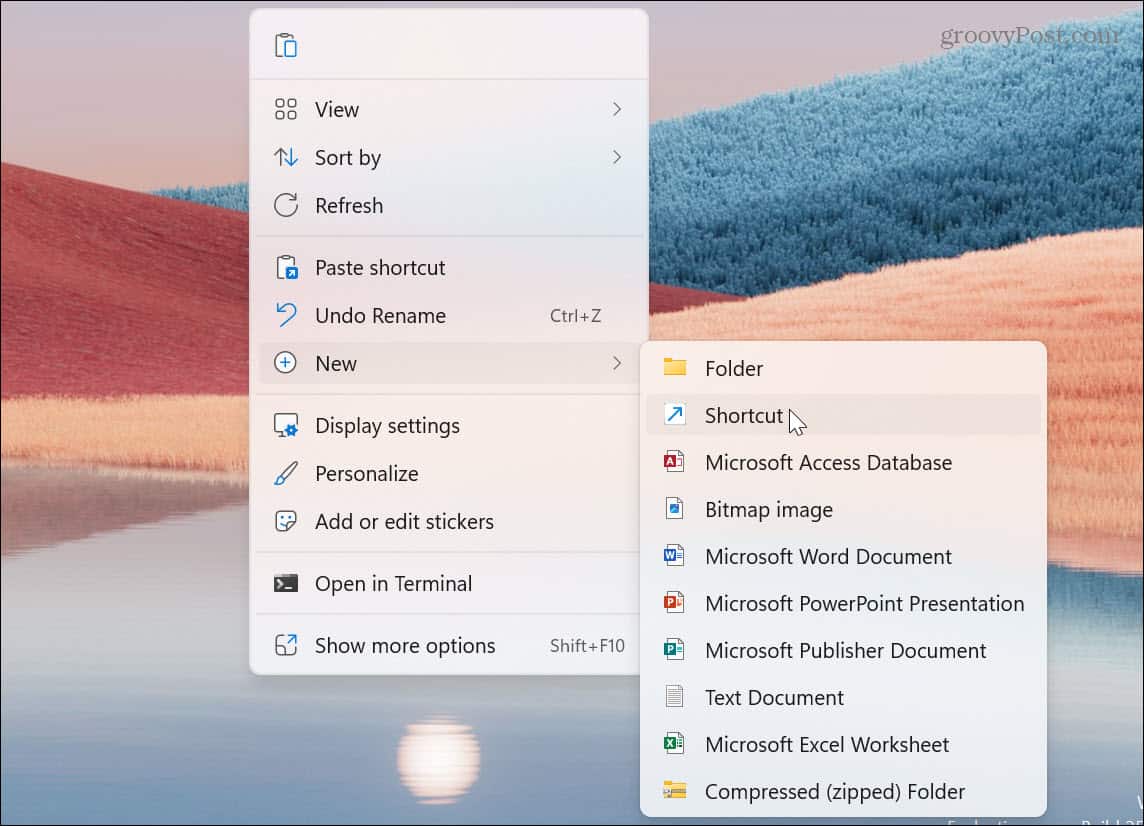
- When the Shortcut Wizard starts, enter the direct path of the app or item you want a shortcut. Or, click the Browse button and navigate to the item’s location, and click Next. For example, we are creating a shortcut for the Winver utility.

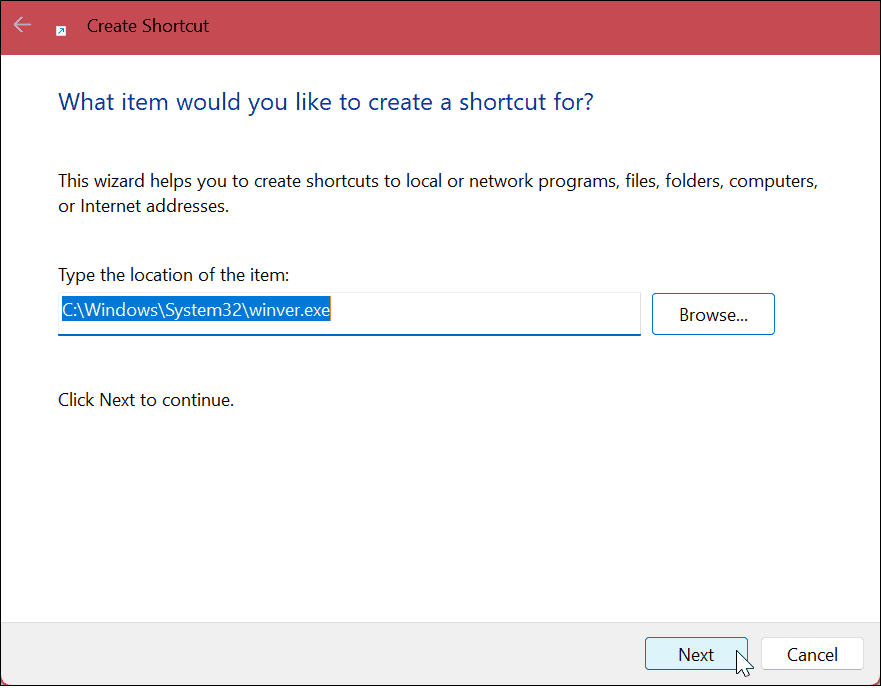
- Type in a name for the shortcut – name it something that allows you to know what it is for.
- Click the Finish button.

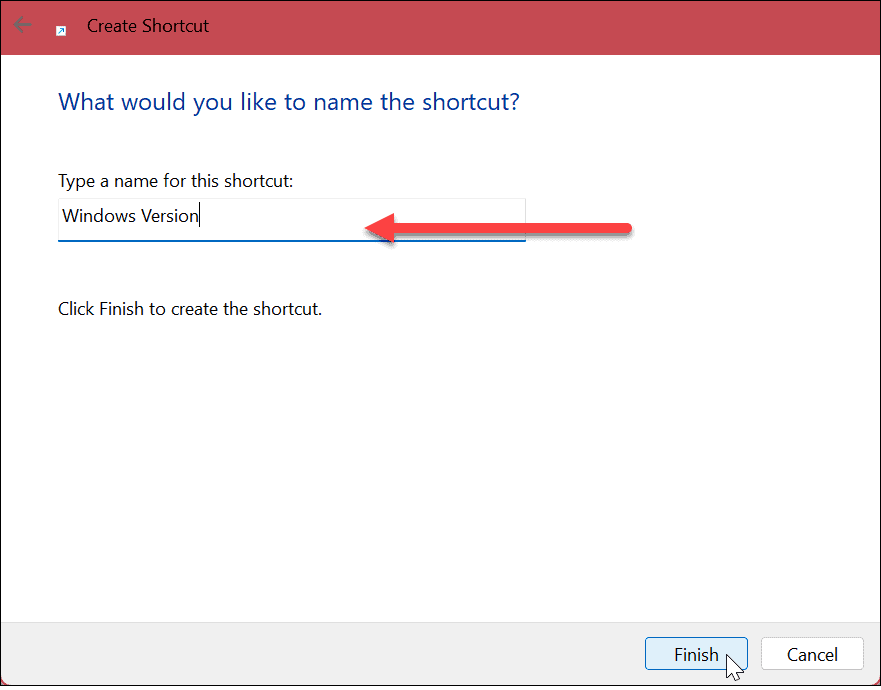
- The shortcut for the item will be placed on the desktop with the name you gave it. Double-click the shortcut to launch what you need.

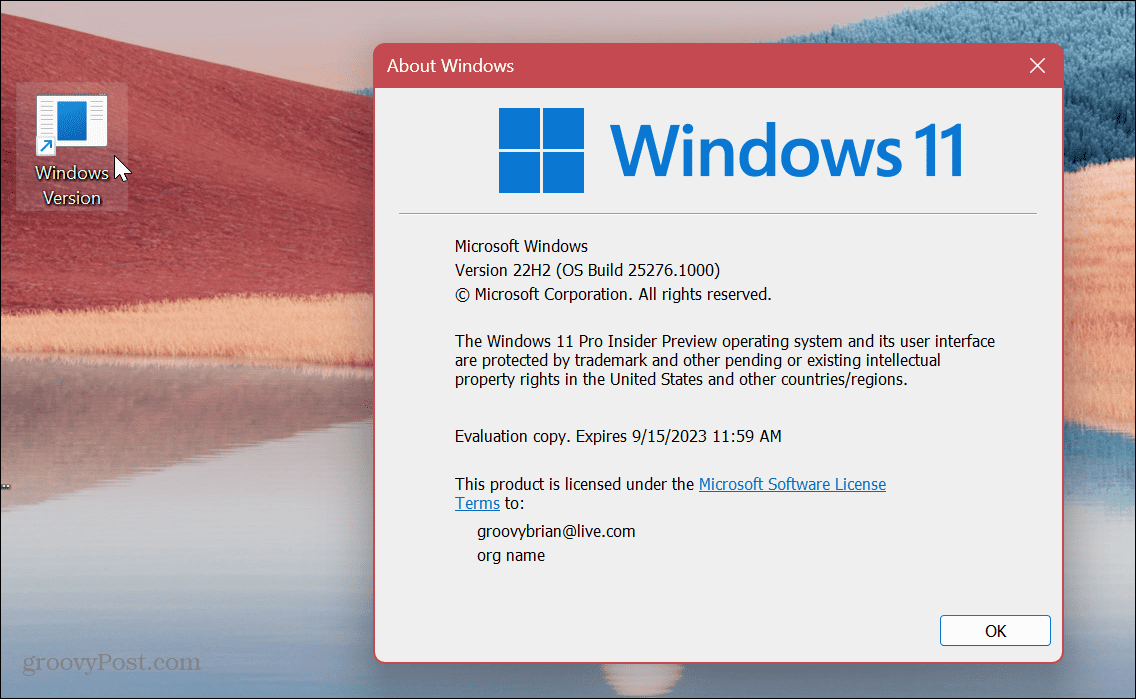
Windows will give your shortcut an included generic icon. So if you want to make the shortcut snazzier, you can customize Windows 11 icons.
2. Drag and Drop to Create a Desktop Shortcut
Another straightforward way to create a desktop shortcut to an app or document deep in File Explorer is using the drag and drop method.
Drag and Drop to Create a Shortcut on Windows 11 Desktop
- Launch File Explorer and navigate to the item you want to create a shortcut.
- Right-click the file or folder, drag it to the desktop and click Create shortcuts here option from the menu.

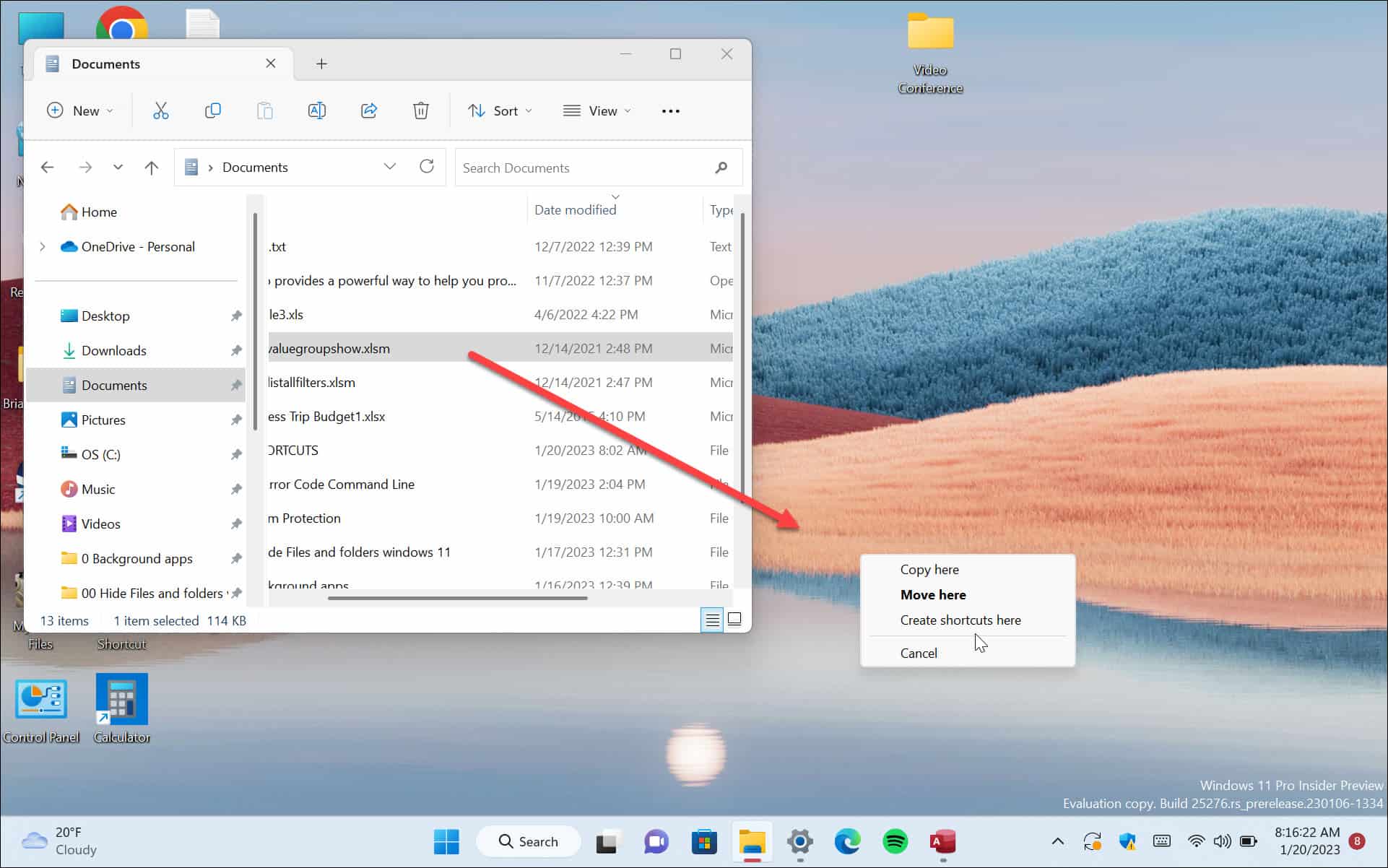
- A desktop shortcut will be created for the item. Note that Windows will automatically name it as a shortcut, but you can rename it if you want. In addition, you can hover the cursor over the shortcut to view the direct path to the folder.

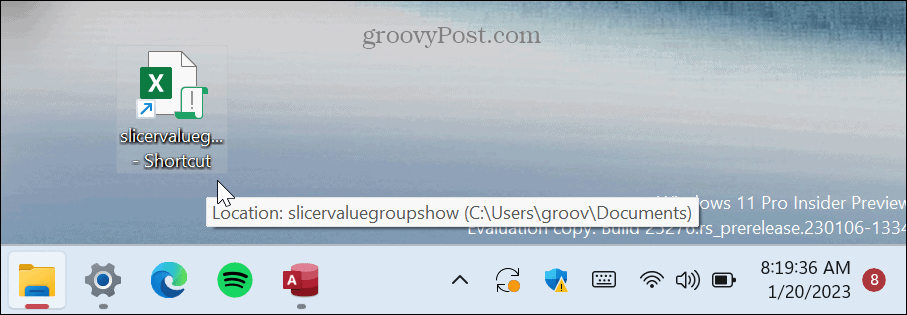
3. Create a Desktop Shortcut from Start Menu Items
While you can manage shortcuts on the Start menu, you can also create desktop shortcuts from items on the menu.
Create a Shortcut from the Start Menu
- Press the Windows key or click the Start button to launch the menu.
- Left-click the app you want to create a shortcut and drag it to the desktop.

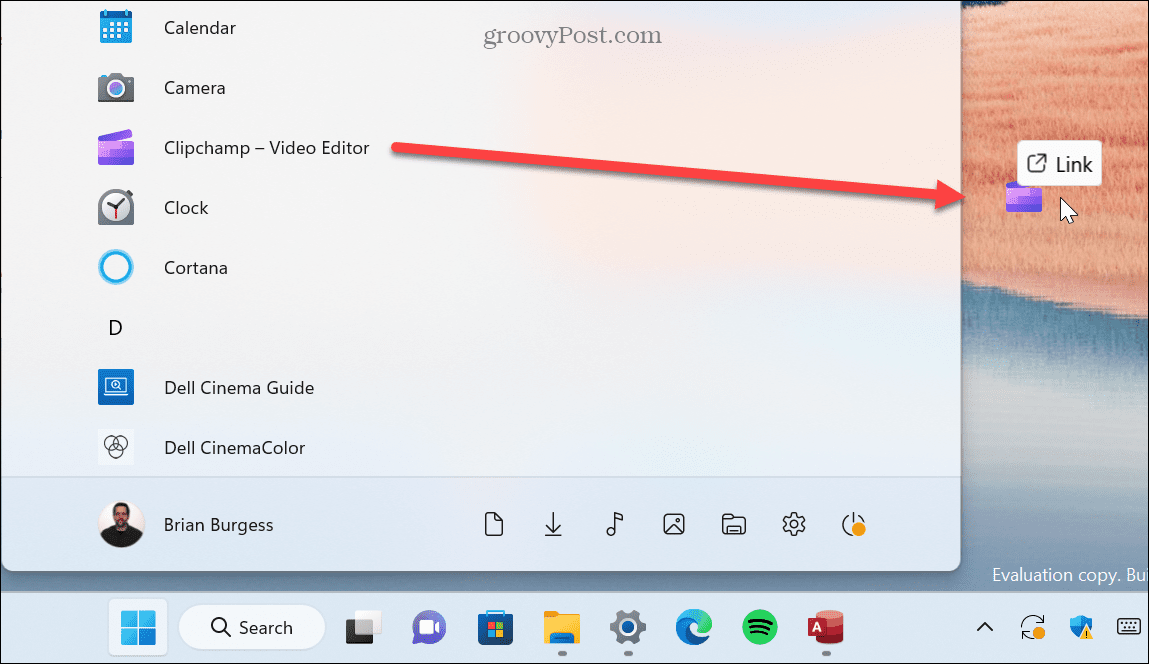
A shortcut for the app will be created on the desktop. Note that you cannot drag pinned apps from the Start menu.
4. Create a Website Desktop Shortcut
If you want to create a desktop shortcut to a website or specific webpage that you frequently read, you can. Creating one is as straightforward as the drag and drop method.
- Launch the web browser of your choice and navigate to the page you want to create a shortcut.
- Click the website icon from the address bar and drag it to the desktop.

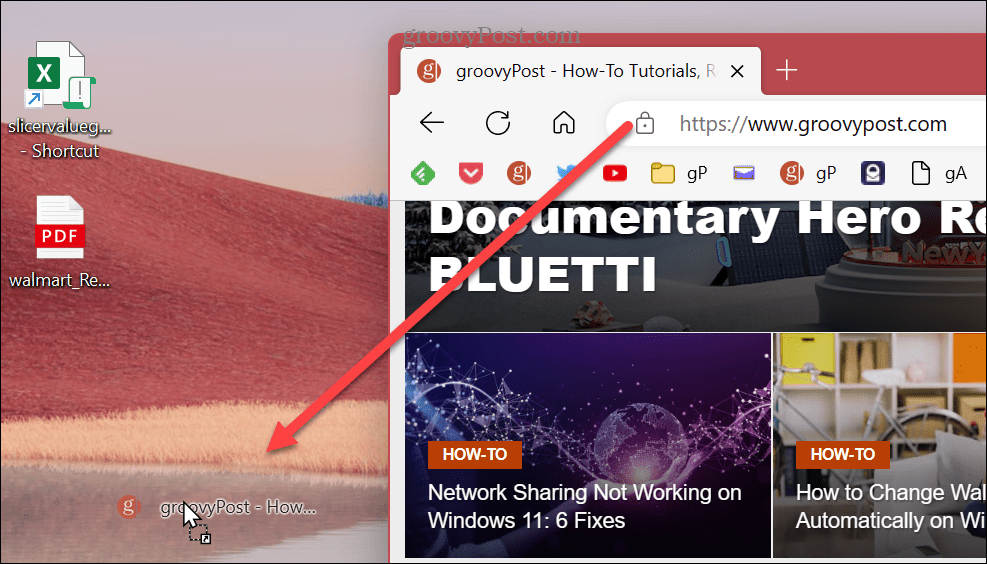
5. Use Shortcut Wizard
The drag and drop method shown above is simple; however, it’s also worth noting you can use the Shortcut Wizard to create a desktop shortcut to a website.
To Create a Website Desktop Shortcut via the Wizard
- Right-click an empty desktop area and select New > Shortcut from the menu.


- Type or paste the website’s URL into the item location field and click Next.

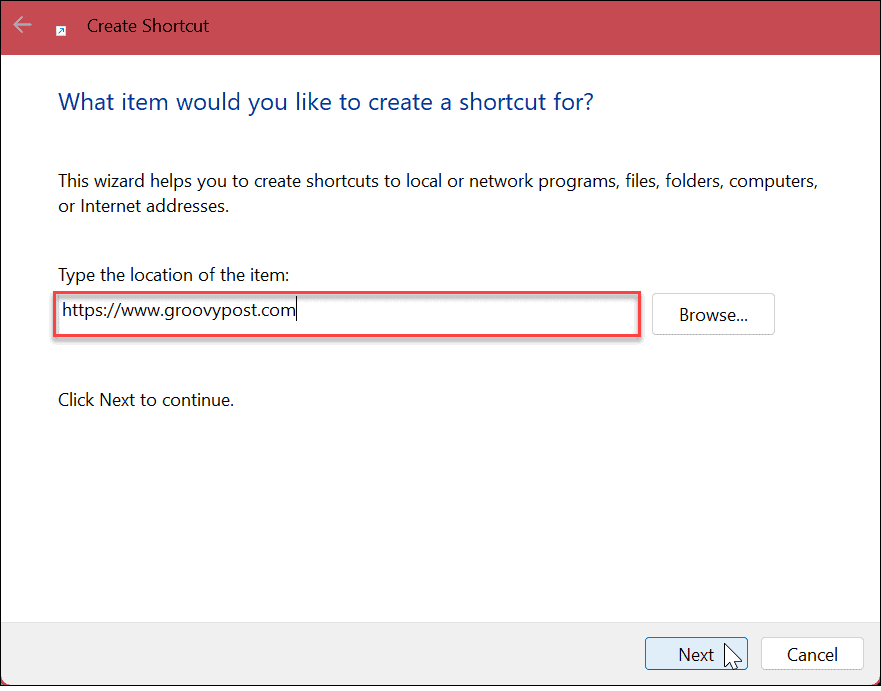
- Give a name to your website shortcut and click the Finish button.

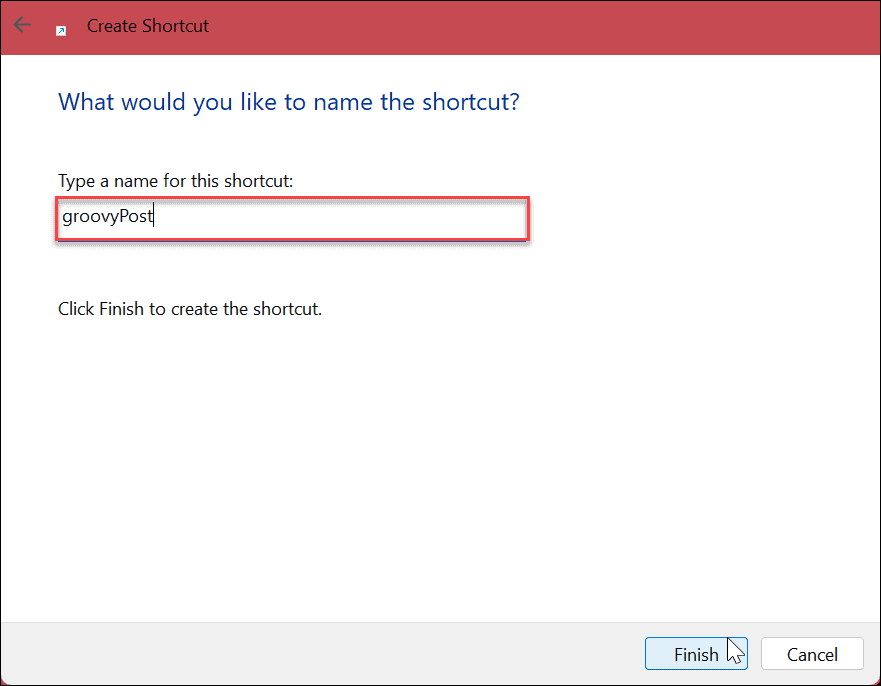
The website shortcut will be created on the desktop and open in your browser when selected.
6. Create Desktop Shortcuts on Windows 11 via Context Menu
If you want to create a desktop shortcut to a specific document, app, or other files, you can do it via the context menu from File Explorer.
- Launch File Explorer and navigate to the item you want to create a shortcut.
- Press the Shift key on your keyboard, right-click the item, and then select the Create shortcut option from the menu.

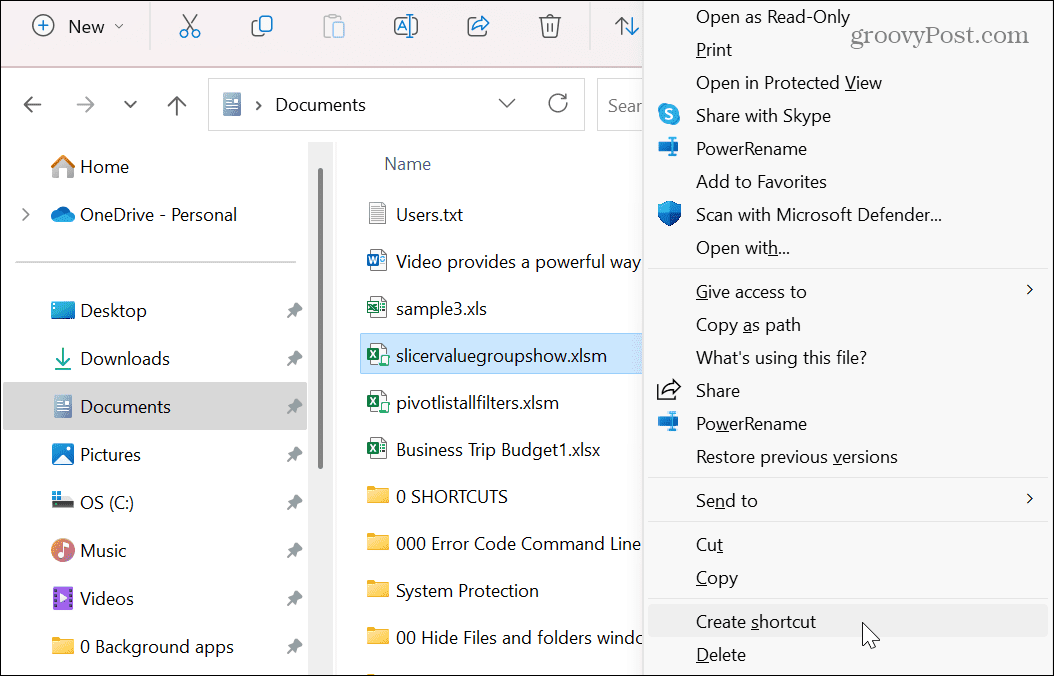
The shortcut will be created and saved in the File Explorer Window you are in. But you can drag it out to the desktop or other File Explorer locations.
One thing to remember — you can’t create a shortcut in one of the system folders but you can kick them over to the desktop.
Managing Shortcuts on Windows
If you want fast access to files, folders, apps, and other items on your system, using the above steps will allow you to create desktop shortcuts on Windows 11. In addition, you can save a few clicks by creating desktop shortcuts from items on the Start menu to have easier access to specific apps and files.
Leave a Reply
Leave a Reply






